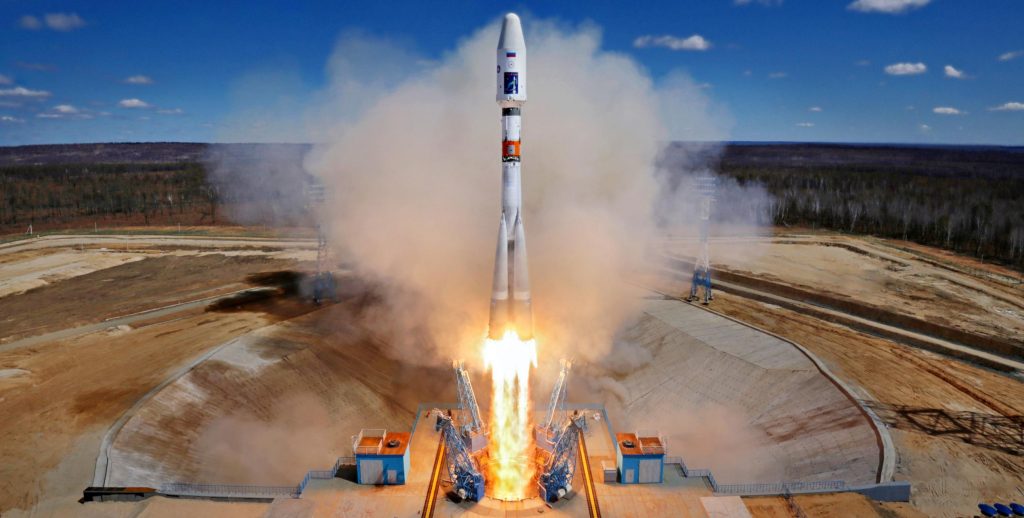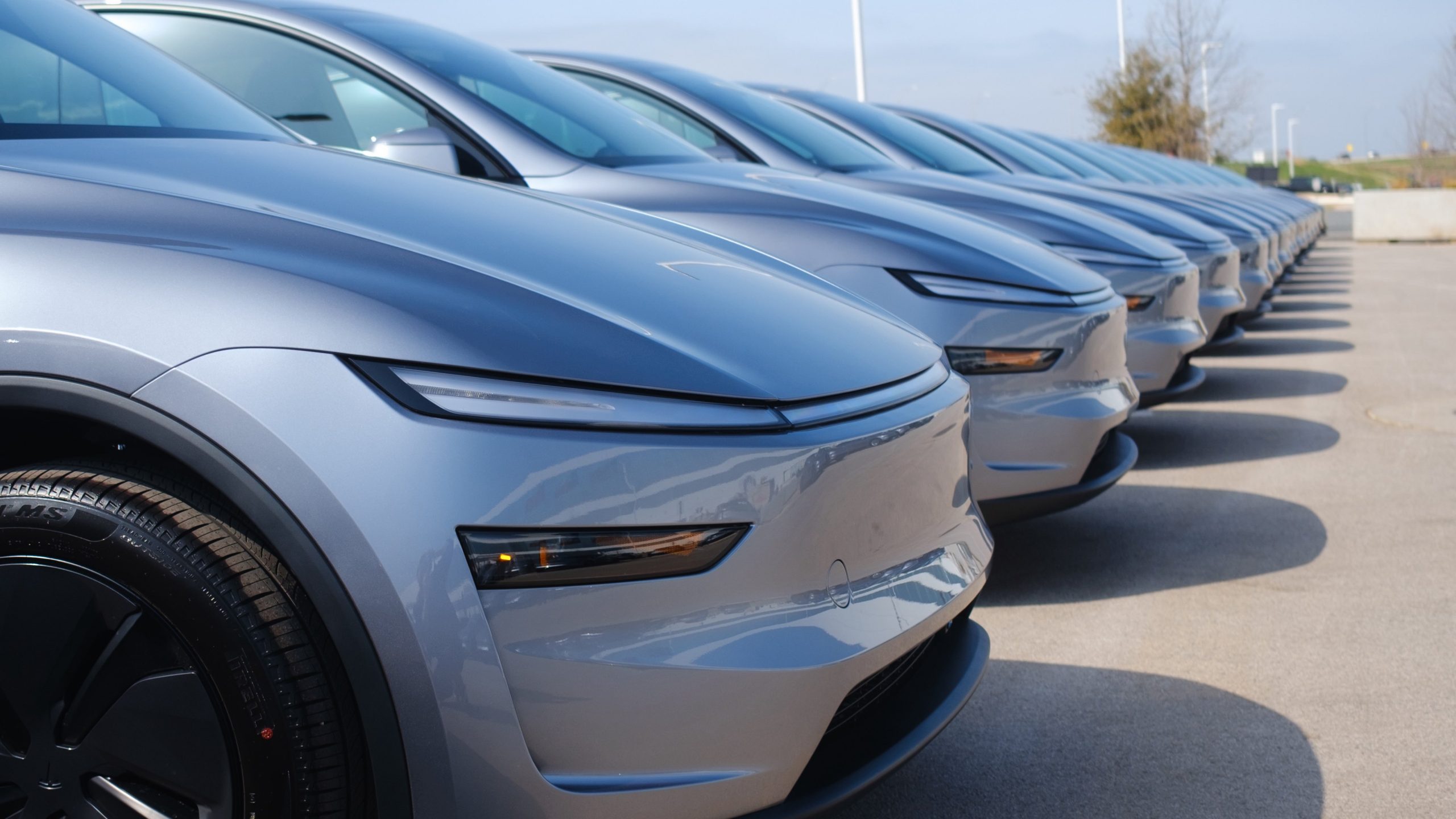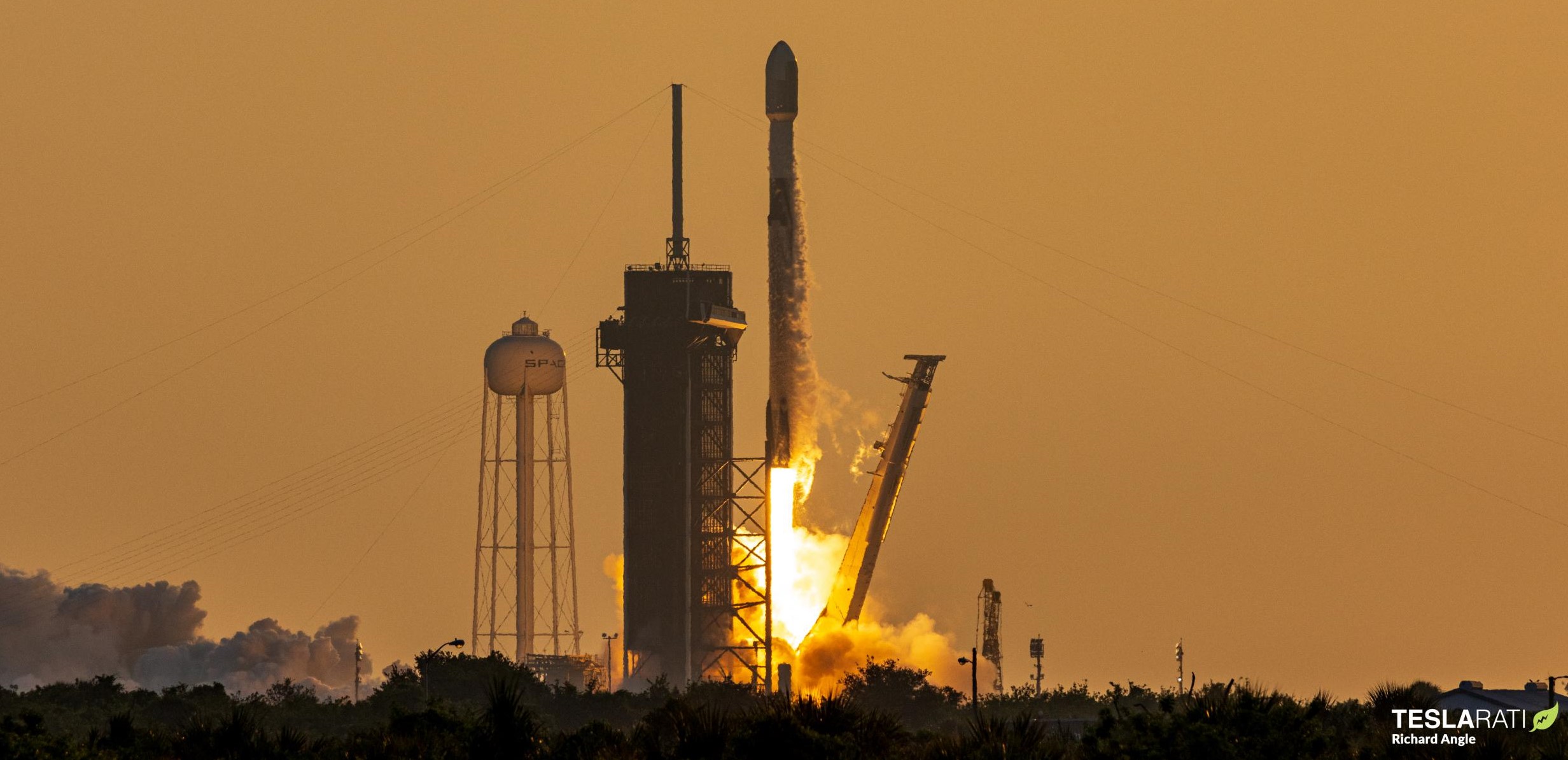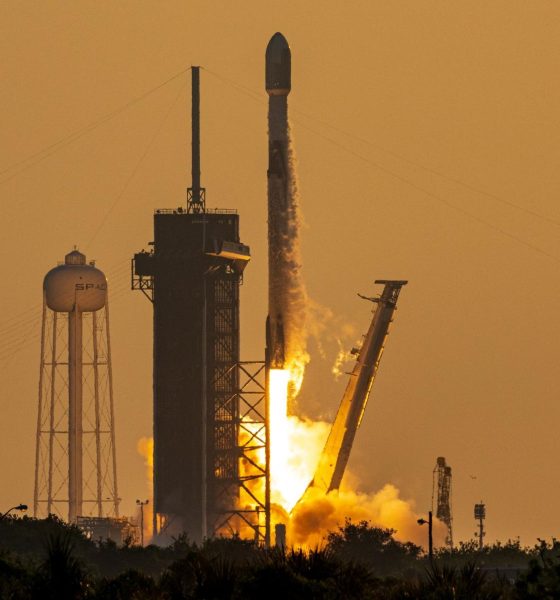SpaceX has completed its 21st Falcon 9 launch of 2022, continuing an impressive average cadence of more than one launch per week.
After an unexplained 40-minute delay from 6:20 am EDT, former Falcon Heavy booster B1052 lifted off from Kennedy Space Center Launch Complex 39A shortly after sunrise at 6:59 am EDT (10:59 UTC) on Wednesday, May 18th. Carrying its second batch of Starlink satellites on its third mission as a Falcon 9 boosters and fifth launch overall, Falcon B1052 performed flawlessly, safely carrying a reused Falcon fairing, expendable upper stage, and stack of 53 Starlink satellites most of the way free of Earth’s atmosphere.
B1052 then separated and coasted back to Earth as Falcon 9’s upper stage continued to orbit. About nine minutes after liftoff, the booster touched down on drone ship A Shortfall of Gravitas (ASOG) and the upper stage reached a safe parking orbit, marking the premature end of SpaceX’s official webcast. Starlink satellite deployment – typically anywhere from 20 to 60 minutes after liftoff – now occurs off-camera, with only a slight vocal confirmation and a tweet from SpaceX to verify the most important part of each mission.
Looking beyond the bounds of calendar years, Starlink 4-18 is SpaceX’s 28th successful launch since November 11th, 2021 – a period of six months and seven days or 27 weeks. In other words, SpaceX is already more than half of the way to demonstrating a sustained cadence of one launch per week over a full 12 months, leaving little doubt that the company has the ability to achieve CEO Elon Musk’s lesser goal of 52 launches in 2022. The company’s launch teams, processing facilities, launch pads, Falcon production, and fleets of reusable boosters and fairings have proven themselves fully capable.
The only remaining uncertainty stems from reliability and unknown unknowns. Even the most reliable rocket in the world is a highly complex system that can still fail in thousands of unique ways. After an impressive streak of 130 consecutively successful launch campaigns, Falcon 9 is by some measures the most reliable launch vehicle still in operation. As early as June 2022, however, Falcon 9 will have an opportunity to set the record for most consecutive successes of any rocket in history when it attempts to launch without fail for the 134th time in a row. For now, Russia’s R-7 or Soyuz family of rockets – which have launched close to 2000 times since 1966 – hold the current record of 133 consecutive successes. Technically, if one considers Falcon 9 and Falcon Heavy part of the same family, R-7/Soyuz and Falcon are now tied with records of 133 consecutive successes.
However, the differences between Falcon 9 and Falcon Heavy far exceed the relatively small differences between the many slight R-7/Soyuz variations. Given that the variants of Falcon 9 rockets that began SpaceX’s current streak of success in January 2017 were significantly different than those flying today, the full R-7/Soyuz family and Falcon 9 are more directly and fairly comparable than they might initially appear.

Regardless, SpaceX will have accomplished an extraordinary feat if Falcon 9 does complete its 134th successful launch in a row sometime next month. But simultaneously, R-7’s 133-launch record serves as a reminder that at one point in history, an entirely different rocket family that had been averaging more than one launch per week for almost a decade still failed after 133 successful launches. Modern airliners serve as another good reminder of the inherent instability of complex artificial mechanisms: even though they are statistically one of the safest forms of mass transit humans have ever created, they still occasionally crash.
To assume any such system has become immune to failure after a number of successes is to tempt fate. Nonetheless, with the qualification that there are no guarantees, SpaceX’s performance over the last five years significantly raises confidence in the company’s ability to continue executing and completing orbital launches at a rapid pace throughout 2022 (and beyond) without failure.
Beyond Starlink 4-18, SpaceX is scheduled to launch its own Transporter-5 rideshare mission as early as May 25th, Cargo Dragon’s CRS-25 space station supply mission on June 7th, Egypt’s Nilesat-301 communications satellite on June 10th, and a number of other unspecified commercial launches and Starlink missions in June and July.

News
Tesla partners with Lemonade for new insurance program
Tesla recently was offered “almost free” coverage for Full Self-Driving by Lemonade’s Shai Wininger, President and Co-founder, who said it would be “happy to explore insuring Tesla FSD miles for (almost) free.”

Tesla owners in California, Oregon, and Arizona can now use Lemonade Insurance, the firm that recently said it could cover Full Self-Driving miles for “almost free.”
Lemonade, which offered the new service through its app, has three distinct advantages, it says:
- Direct Connection for no telematics device needed
- Better customer service
- Smarter pricing
The company is known for offering unique, fee-based insurance rates through AI, and instead of keeping unclaimed premiums, it offers coverage through a flat free upfront. The leftover funds are donated to charities by its policyholders.
On Thursday, it announced that cars in three states would be able to be connected directly to the car through its smartphone app, enabling easier access to insurance factors through telematics:
Lemonade customers who own @Tesla vehicles in California, Oregon, and Arizona can now connect their cars directly to the Lemonade app! ⚡🚘
Direct connection = no telematics device needed 📵
Better customer experience 💃
Smarter pricing with Lemonade 🧠This is a game-changer… pic.twitter.com/jbabxZWT4t
— Lemonade (@Lemonade_Inc) December 11, 2025
Tesla recently was offered “almost free” coverage for Full Self-Driving by Lemonade’s Shai Wininger, President and Co-founder, who said it would be “happy to explore insuring Tesla FSD miles for (almost) free.”
The strategy would be one of the most unique, as it would provide Tesla drivers with stable, accurate, and consistent insurance rates, while also incentivizing owners to utilize Full Self-Driving for their travel miles.
Tesla Full Self-Driving gets an offer to be insured for ‘almost free’
This would make FSD more cost-effective for owners and contribute to the company’s data collection efforts.
Data also backs Tesla Full Self-Driving’s advantages as a safety net for drivers. Recent figures indicate it was nine times less likely to be in an accident compared to the national average, registering an accident every 6.36 million miles. The NHTSA says a crash occurs approximately every 702,000 miles.
Tesla also offers its own in-house insurance program, which is currently offered in twelve states so far. The company is attempting to enter more areas of the U.S., with recent filings indicating the company wants to enter Florida and offer insurance to drivers in that state.
News
Tesla Model Y gets hefty discounts and more in final sales push

Tesla Model Y configurations are getting hefty discounts and more benefits as the company is in the phase of its final sales push for the year.
Tesla is offering up to $1,500 off new Model Y Standard trims that are available in inventory in the United States. Additionally, Tesla is giving up to $2,000 off the Premium trims of the Model Y. There is also one free upgrade included, such as a paint color or interior color, at no additional charge.
NEWS: Tesla is now offering discounts of up to $1,500 off new Model Y Standard vehicles in U.S. inventory. Discounts of up to $2,000 are also being offered on Model Y Premiums.
These discounts are in addition to the one free upgrade you get (such as Diamond Black paint) on… pic.twitter.com/L0RMtjmtK0
— Sawyer Merritt (@SawyerMerritt) December 10, 2025
Tesla is hoping to bolster a relatively strong performance through the first three quarters of the year, with over 1.2 million cars delivered through the first three quarters.
This is about four percent under what the company reported through the same time period last year, as it was about 75,000 vehicles ahead in 2024.
However, Q3 was the company’s best quarterly performance of all time, and it surged because of the loss of the $7,500 EV tax credit, which was eliminated in September. The imminent removal of the credit led to many buyers flocking to Tesla showrooms to take advantage of the discount, which led to a strong quarter for the company.
2024 was the first year in the 2020s when Tesla did not experience a year-over-year delivery growth, as it saw a 1 percent slide from 2023. The previous years saw huge growth, with the biggest coming from 2020 to 2021, when Tesla had an 87 percent delivery growth.
This year, it is expected to be a second consecutive slide, with a drop of potentially 8 percent, if it manages to deliver 1.65 million cars, which is where Grok projects the automaker to end up.
Tesla will likely return to its annual growth rate in the coming years, but the focus is becoming less about delivery figures and more about autonomy, a major contributor to the company’s valuation. As AI continues to become more refined, Tesla will apply these principles to its Full Self-Driving efforts, as well as the Optimus humanoid robot project.
Will Tesla thrive without the EV tax credit? Five reasons why they might
These discounts should help incentivize some buyers to pull the trigger on a vehicle before the year ends. It will also be interesting to see if the adjusted EV tax credit rules, which allowed deliveries to occur after the September 30 cutoff date, along with these discounts, will have a positive impact.
News
Tesla FSD’s newest model is coming, and it sounds like ‘the last big piece of the puzzle’
“There’s a model that’s an order of magnitude larger that will be deployed in January or February 2026.”

Tesla Full Self-Driving’s newest model is coming very soon, and from what it sounds like, it could be “the last big piece of the puzzle,” as CEO Elon Musk said in late November.
During the xAI Hackathon on Tuesday, Musk was available for a Q&A session, where he revealed some details about Robotaxi and Tesla’s plans for removing Robotaxi Safety Monitors, and some information on a future FSD model.
While he said Full Self-Driving’s unsupervised capability is “pretty much solved,” and confirmed it will remove Safety Monitors in the next three weeks, questions about the company’s ability to give this FSD version to current owners came to mind.
Musk said a new FSD model is coming in about a month or two that will be an order-of-magnitude larger and will include more reasoning and reinforcement learning.
He said:
“There’s a model that’s an order of magnitude larger that will be deployed in January or February 2026. We’re gonna add a lot of reasoning and RL (reinforcement learning). To get to serious scale, Tesla will probably need to build a giant chip fab. To have a few hundred gigawatts of AI chips per year, I don’t see that capability coming online fast enough, so we will probably have to build a fab.”
NEWS: Elon Musk says FSD Unsupervised is “pretty much solved at this point” and that @Tesla will be launching Robotaxis with no safety monitors in about 3 weeks in Austin, Texas. He also teased a new FSD model is coming in about 1-2 months.
“We’re just going through validation… https://t.co/Msne72cgMB pic.twitter.com/i3wfKX3Z0r
— Sawyer Merritt (@SawyerMerritt) December 10, 2025
It rings back to late November when Musk said that v14.3 “is where the last big piece of the puzzle finally lands.”
With the advancements made through Full Self-Driving v14 and v14.2, there seems to be a greater confidence in solving self-driving completely. Musk has also personally said that driver monitoring has been more relaxed, and looking at your phone won’t prompt as many alerts in the latest v14.2.1.
This is another indication that Tesla is getting closer to allowing people to take their eyes off the road completely.
Along with the Robotaxi program’s success, there is evidence that Tesla could be close to solving FSD. However, it is not perfect. We’ve had our own complaints with FSD, and although we feel it is the best ADAS on the market, it is not, in its current form, able to perform everything needed on roads.
But it is close.
That’s why there is some legitimate belief that Tesla could be releasing a version capable of no supervision in the coming months.
All we can say is, we’ll see.










